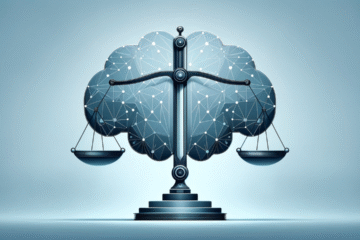This article is written by Janvi Mehta a 2nd Semester student an intern under Legal vidhiya
INDIA
India lies in South Asian region and Pakistan, China, Bangladesh, Myanmar, Nepal, and Bhutan are neighbours, all of which were once parts of the Indian subcontinent or greater India. Geographically speaking, the nation is the sixth largest in the globe, and its population makes it the largest democracy in the world. India is the country with the second-highest population in the world after China. With many different cultures and religions coexisting, the country is recognised for its diversity. The official languages of the federal government are Hindi and English, while the constitution also recognises a number of other languages.
The current federal state of India is made up of 28 federated units that are organized into seven unions. Its parliamentary framework depends on the Westminster type of government. West first came into contact with India when India was taken over by the British East India Company in the 18th century. In the 19th century, when Britain colonized India, the Viceroy served as both the Governor General and head of state. A significant nonviolent resistance movement marked India’s struggle for independence from the British Colonial Empire in the middle of the 19th century. India finally gained its independence from the British Empire in 1947.
Abstract
On November 26, 1949, the Constituent Assembly of India approved the newly made draft of Constitution, and on January 26, 1950, the Republic of India was established as a result. The Indian Constitution is the country’s preeminent regulation. The framework of the government, the powers of the executive, legislative, and judicial branches, as well as the responsibilities and rights of the people, are all outlined in detail in the Constitution.
During the British colonial period in India, the historical foundations of the Indian Constitution can be found. Following the Indian Rebellion of 1857, the British Crown took direct control of India by 1858. Governor-General and his Council, which primarily consisted of British officials, ran the British colonial government in India.
The Indian nationalist movement for self-rule began to gain traction at the beginning of the 1900s. Mahatma Gandhi, Jawaharlal Nehru, Sardar Vallabhbhai Patel, and B.R. Ambedkar were important players in the struggle for Indian independence. The Indian Public Congress, which was laid out in 1885, turned into the development’s super political player.
In order for India to achieve independence, the Indian National Congress demanded the creation of a Constituent Assembly. In 1940, the British government approved the plan, and in 1946, the Constituent Assembly was established. The Assembly was made up of nominees and delegates from provinces, princely states, and other nations, and it had 389 members. The drafting of the Indian Constitution was a monumental task, and the Constituent Assembly took over two years to finalize the document. The Constitution of India is a unique blend of several sources, including the British parliamentary system, the US Constitution, and the principles of social justice and equality enshrined in the Indian freedom struggle.
The Indian Constitution has undergone several amendments since its adoption to reflect changing social and political realities. Today, it stands as a testament to India’s commitment to democracy, secularism, and the rule of law.
Objective
The aim of this article is to provide readers with a detailed and accurate account of the events, people, and social and political movements that contributed to the creation of the Constitution. It intends to draw attention to the importance of the Indian Constitution within the framework of political history of India as well as its influence on the social, political, and legal institutions of contemporary India. This article’s overall objective is to give people a thorough knowledge of the historical background and importance of the Indian Constitution.
Through this essay, we will learn about the ancient developments and the development of the Indian Constitution.
The Indian Constitution
The Indian Constitution, which outlines the parameters of the administrative, legislative, and judicial branches of government and the rights and responsibilities of citizens, is India’s supreme law. At the point when the Constituent Gathering passed the Constitution on November 26, 1949, It produced results on January 26, 1950, the Indian Republic was authoritatively settled.[1]
The Indian Constitution is unique in several ways. Firstly, it is one of the longest written constitutions in the world, with 395 articles and 12 schedules. Secondly, it is a blend of several sources, including the British parliamentary system, the US Constitution, and the principles of social justice and equality enshrined in the Indian freedom struggle.
The Indian constitution acknowledges and safeguards the basic rights of its citizens, such as the right to freedom of religion, expression, and speech, the right to equality, and the right to personal liberty and life. Additionally, it contains provisions aimed at protecting the rights of minority communities, providing affirmative action for socially and economically marginalized groups, and devolving power through local self-governance.
Since its adoption, the Indian Constitution has undergone several amendments to reflect changing social and political realities. Today, it stands as a testament to India’s commitment to democracy, secularism, and the rule of law.
Key timelines in the 1948 constitutional process[2]
1946 On August 14, 1947, Britain chooses to grant India independence, and a cabinet mission is sent there to talk about the details of the transfer of power. A proposal to establish committees is presented. A drafting committee is formed on August 29, 1947. Following elections, the Constituent Assembly formally meets for the first time on December 6th to begin the constitution-writing process. November 4, 1947 Finalised and submitted draught 1948 – 1949 Sessions of the Constituent Assembly are open to the public. November 26, 1949, final draft is adopted by Constituent Assembly, making it authoritative. 26 January 1950 New Constitution goes into effect.
History
India’s parliamentary system of government holds the executive branch accountable to the legislative branch. The Parliament consists of two houses, the Lok Sabha and Rajya Sabha. India has a federal system of government, with each state and the central government having their own legislative and administrative branches. Furthermore, local governments are granted the authority of self-governance. These systems were inherited from the British government. The East India Company, established in India by Royal Charter in 1600, had a profound impact on India’s political and economic landscape. The current parliamentary system is the result of a series of reforms that were implemented over time.
Evolution of the Indian Constitution[3]
The historical evolution of the Indian Constitution is mainly divided into two stages:
The Company Rule (1773 – 1858)
Act 1773 regulating
1784 Pitt’s India Act
1793 Charter Act
1813 Charter Act
1833 Charter Act
1853 Charter Act.
1858–1947: The Crown Rule
Indian Council (1861, 1892, and 1909) Government of India Act (1858)
Act of the Government of India, 1919
The 1935 Government of India Act
1947’s Indian Independence Act
The Company Rule (1773 – 1858)
1773 Regulating Act
The British Parliament passed the Regulating Act in 1773 to regulate the East India Company’s management in India. It was implemented as a response to the Company’s poor business management, particularly its widespread corruption and employee exploitation.
The Act designated a Governor-General of Bengal who was granted power over the Indian territories of the Company and was nominated by the British monarchy.. A four-man Chief Gathering picked by the Organization furnished the Lead Representative General with help. Additionally, the Act established a Supreme Court in Calcutta with jurisdiction over all Company officials and employees in India.
The British government’s eventual takeover of the East India Company’s administration in India, which marked the beginning of British political authority over India, was based on the Regulating Act of 1773. The British Indian government underwent further changes under the Act, which led to the abolition of the East India Company’s trading monopoly in India and the establishment of a centralized government.
Pitt’s India Act 1784
During the British era of dominance in India, the East India Company’s activities fell into two categories: political and commercial The Court of Directors, which consisted of 24 members, was in charge of the company’s business operations, which mostly involved trading.
On the other hand, the six-member Board of Control was in charge of the Company’s political operations, which included handling military and financial issues. Through the Company’s operations and the gradual expansion of their control over the Indian subcontinent, the British established their possession of India during this time.
Charter Act- 1793
The British Parliament enacted the Charter Act of 1793 to extend the East India Company’s contract in India for a further twenty years. Under the Act, if the agreement was not renewed at the end of the twenty-year period, the British were required to withdraw their Company from India.
The Act brought about significant changes to the East India Company’s operations in India, including the establishment of a Board of Control with increased power to oversee and regulate the Company’s activities in India. Furthermore, the Act required the appointment of a Governor-General for all British territories in India, including those governed by the East India Company.
The Charter Act of 1793 was a important pedestal in the consolidation of rule over India because it extended the Company’s operations for an additional 20 years and increased British oversight of the EIC’s administration in India.
Charter Act- 1813[4]
The East India Company’s dominion in India was prolonged for another two decades under the Charter Act of 1813. The Act made it obligatory for the Company to spend one lakh rupees each year on Indian education, marking a significant milestone in the development of education in India.
Another key provision of the Act was the abolition of the Company’s monopoly on trade in India, which opened up new avenues for trade and commerce in the country. The Act also permitted Christian missionaries to propagate Christianity in India, which marked a significant change in the British policy towards religion in the country.
The clause permitting Indians to join the Company’s workforce for the first time was perhaps one of the Charter Act of 1813’s most important reforms since it gave Indians new possibilities to take part in the governance of their own nation. The Act, in its whole, was a crucial step towards the liberalisation of British policies in India and signalled the start of a new era in ties between Britain and India.
Charter Act – 1833
The Charter Act of 1833 prolonged the East India Company’s rule for another twenty years, and established the Governor-General of Bengal as the Governor-General of India with greater powers. The Lord Macaulay-led First Law Commission was founded in 1834 and Sati was also outlawed in compliance with this law in 1829. The First Law Commission of India was founded after India attained independence in 1955, and M.C. Setalvad presided over it for three years.
Charter Act – 1853
The legislative and executive functions of the Council of Governor General were divided under this new system. The provisional governments of Madras, Bombay, Agra, and Bengal each nominated one member for the Central Legislative Council, which had six members in total. To choose officers for administration, the Indian Civil Service was also made available to recruitment through open competition.
Crown’s Rule (1858-1947)
Government of India Act-1858
The British Crown, not the EIC, was in charge of the country’s possessions in India following the uprising of 1857. The 15-member Council of India was established to assist the recently designated Secretary of State for India. The Viceroy represented Lord Canning, the Governor-General, who was given command of the Indian government. The Leading group of Control and the Court of Chiefs were disposed of as a feature of this change.
Indian Council (1861, 1892,1909)
The Indian Councils Act of 1861 allowed Indian representation in the Viceroy’s Councils. It permitted three Indians to join the Legislative Council and created provisions for the inclusion of Indians as non-official members of the Viceroy’s Executive Council. This Act also marked the beginning of decentralization by recognizing the portfolio system and restoring legislative authority to the Madras and Bombay presidencies. The Legislative Councils were expanded in 1892 to include more responsibilities, such as budget discussions and government questioning, and indirect elections were introduced. The Indian Councils Act of 1909, also known as the Morley-Minto Reforms, was significant in establishing direct elections for the first time and increasing the legislative council’s size from 16 to 60 members. It also recognized distinct communal electorates and proposed Satyendra Prasad Sinha as the first Indian for the position of Viceroy of the Executive Council.
Government of India Act -1919[5]
The Indian political landscape underwent significant shifts as a result of the Montague-Chelmsford Reforms. The division of subjects between the central and provincial areas was one of the most significant changes. In the diarchical system of governance for provincial governments, the reserved list of subjects was overseen by executive councillors, while the transferred list was the responsibility of ministers.. These clergymen were browsed among the chosen individuals from the authoritative committee and they paid all due respects to the lawmaking body. At the federal level, the act established a bicameral legislature. It was comprised of the Regulative Get together and the Authoritative Committee, which later formed into the Rajya Sabha and the Lok Sabha, separately. It established India’s first public service commission and required three Indians to serve on the Viceroy’s Executive Council. Additionally, this measure increased voter participation by granting voting rights to approximately 10% of the population.
Government of India Act -1935
An all-India Federation that would have included British India and the princely states was suggested in the Government of India Act of 1935, but it was never implemented. With the Federal List falling under the centre, the Provincial List under the provinces, and the Concurrent List serving both, the Act split subjects between the centre and the provinces. Diarchy was implemented at the federal level after being banned at the provincial level. More autonomy was granted to the provinces, and bicameral legislatures were implemented in six of the eleven provinces. A federal court was established, and the Indian Council was disbanded. Aden and Burma were cut off from India. The RBI was also to be made under the provisions of the Act. This Act remained in function till it was suspended and imposed by the new Indian Constitution.
Indian Independence Act -1947[6]
The declaration of India’s independence and sovereignty occurred. The positions of the Viceroy and Governors became nominal, having a symbolic role. Responsible governments were established at both the central and provincial levels. The Constituent Assembly of India was granted both legislative and executive powers.
The Indian Independence Act of 1947, an act of the British Parliament, saw the end of British control in India and the establishment of Pakistan as an independent nation. The Act formalised the division of India along religious lines, creating the new state of Pakistan from the primarily Muslim provinces. Additionally, it abolished British suzerainty over the princely states and provided for the transfer of authority from the British Crown to the newly established governments of Pakistan and India. On August 15, 1947, the Act went into effect, ushering in a new chapter in the history of the Indian subcontinent.
Conclusion
In conclusion, the historical evolution of the Indian Constitution has been a long and complex process that spans several centuries. The EIC’s establishment marked the beginning of the British presence in south Asian region of India, which gradually led to their conquering of the country. The British introduced various Acts, including the Government of India Act, which improvised for some degree of Indian participation in governance. However, it was not until India gained independence in 1947 that the Indian Constitution could be established. Since then, the Constitution has undergone several amendments, reflecting the changing needs of the country and its people. Today, the Indian Constitution remains a dynamic document that serves as the foundation of India’s democratic system.
The Indian Constitution has its roots in the establishment of the East India Company by the British. The British introduced various Acts under the Company’s rule and renewed their agreement periodically. As they gained control of India, they enacted laws that served their interests. Eventually, the British completely subjugated India and held it under their dominion until 1947, when India gained independence. However, it took over three years for the Indian Constitution to be drafted after independence.
[1] MP Jain , Constitutional Law, pg. 8 (Volume 1))
[2] https://unacademy.com/content/upsc/study-material/general-awareness/historical-background-of-the-indian-constitution/
[3] https://unacademy.com/content/upsc/study-material/general-awareness/historical-background-of-the-indian-constitution/
[4] Charter Act 1813, Unacademy, https://unacademy.com/content/upsc/study-material/general-awareness/historical-background-of-the-indian-constitution/
[5] Government of India Act 1919, Unacademy, https://unacademy.com/content/upsc/study-material/general-awareness/historical-background-of-the-indian-constitution/
[6] Indian independence act 1947, Byjus, https://byjus.com/free-ias-prep/historical-background-of-constitution-of-india/




0 Comments